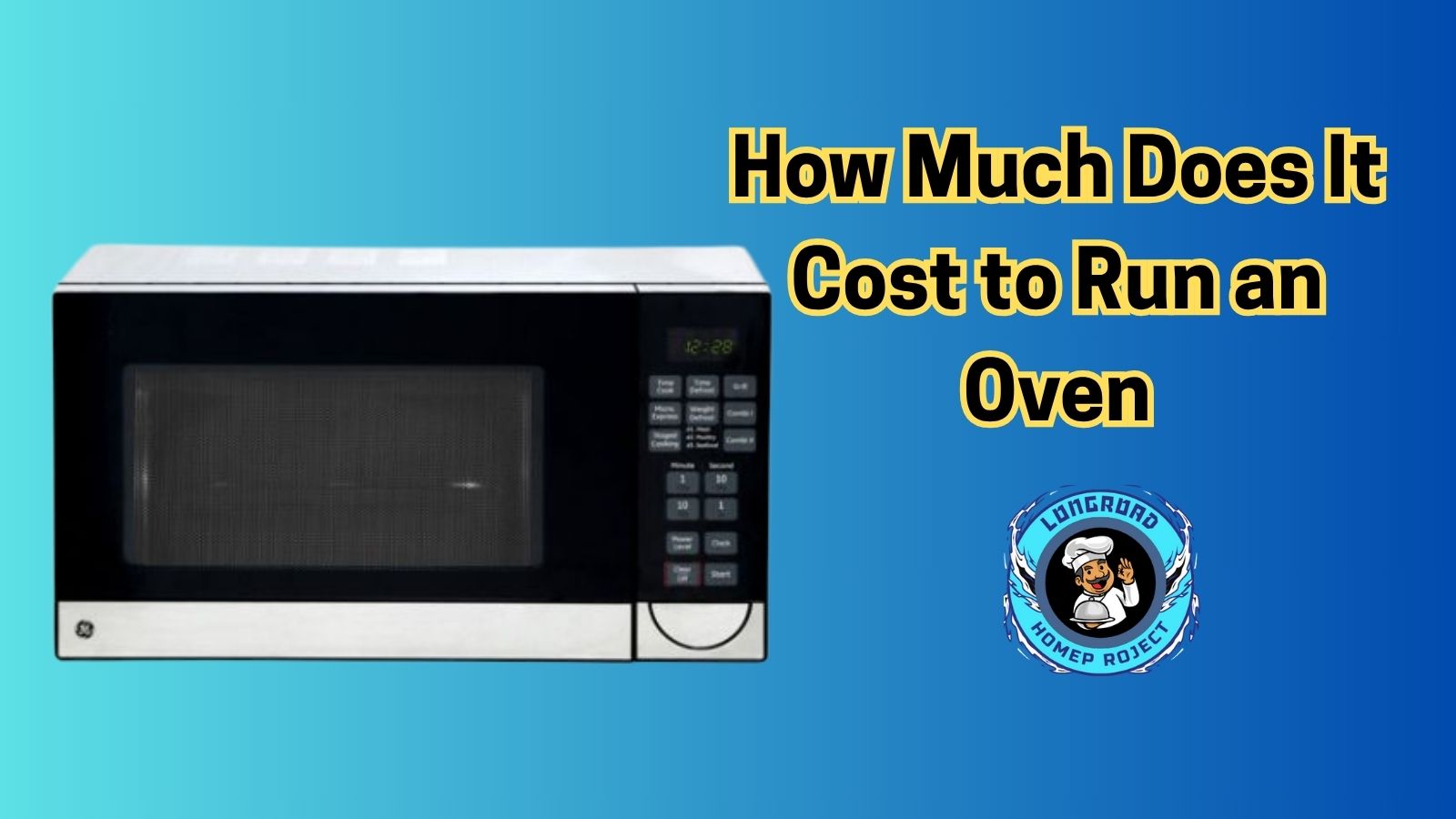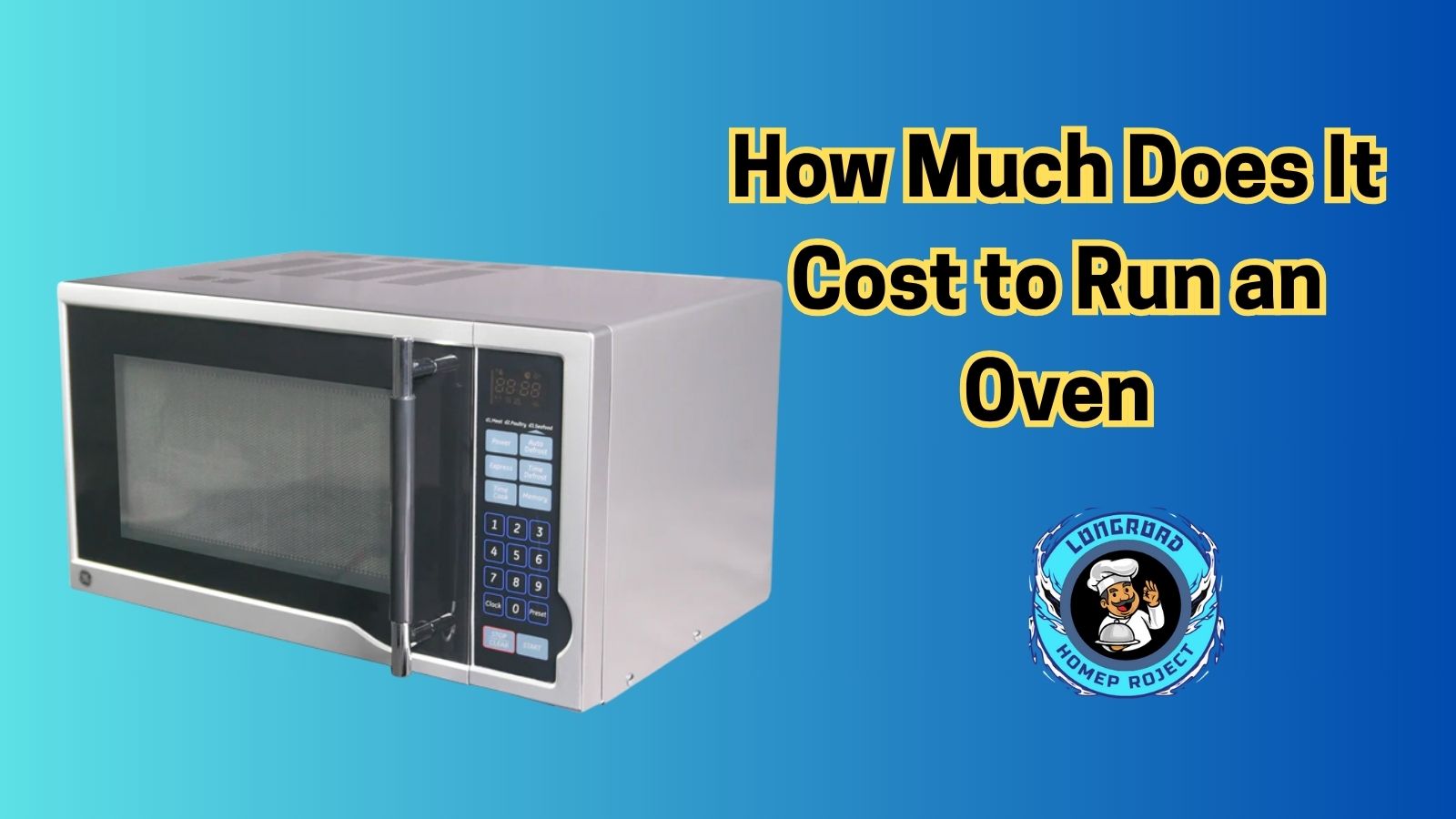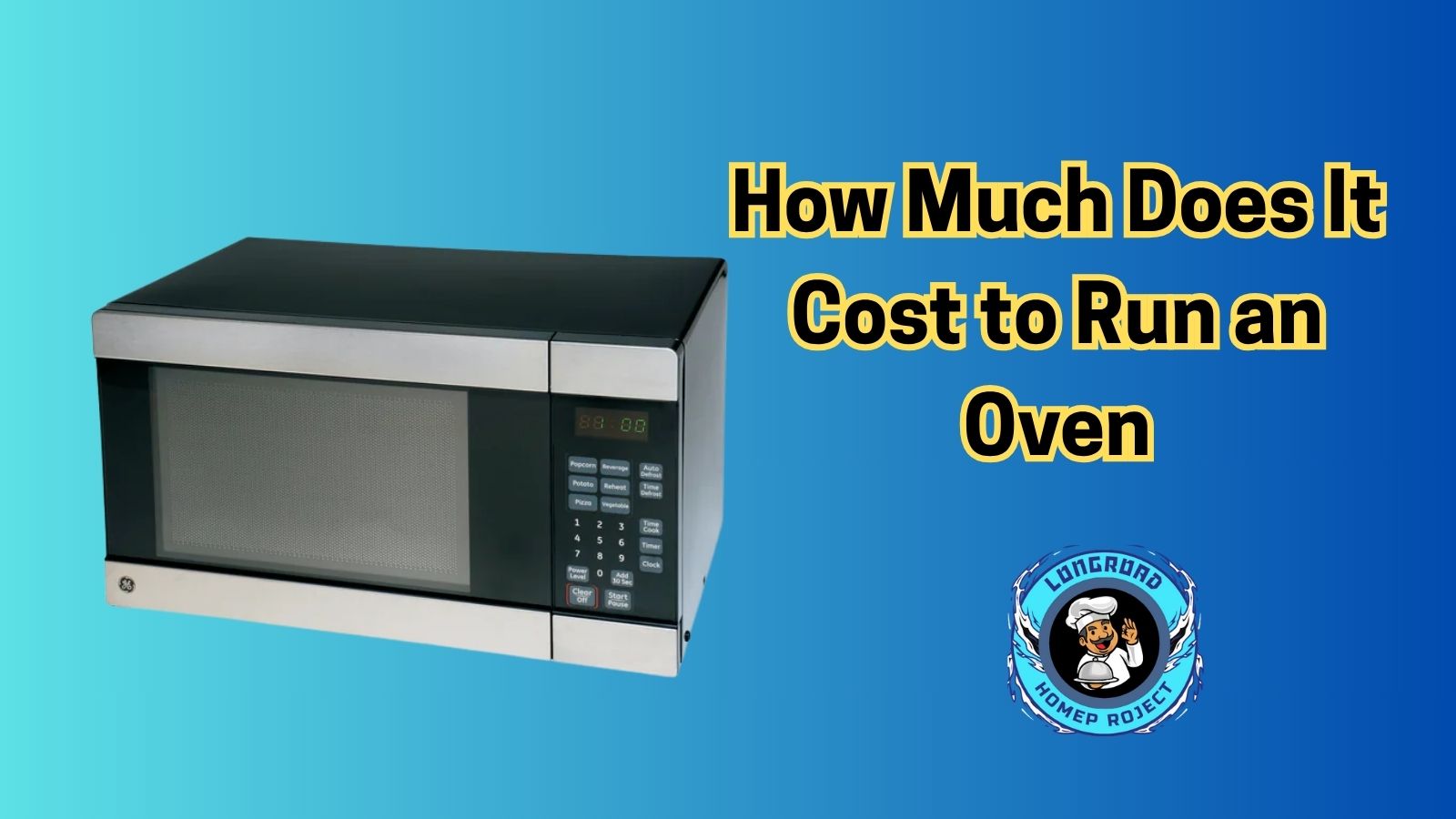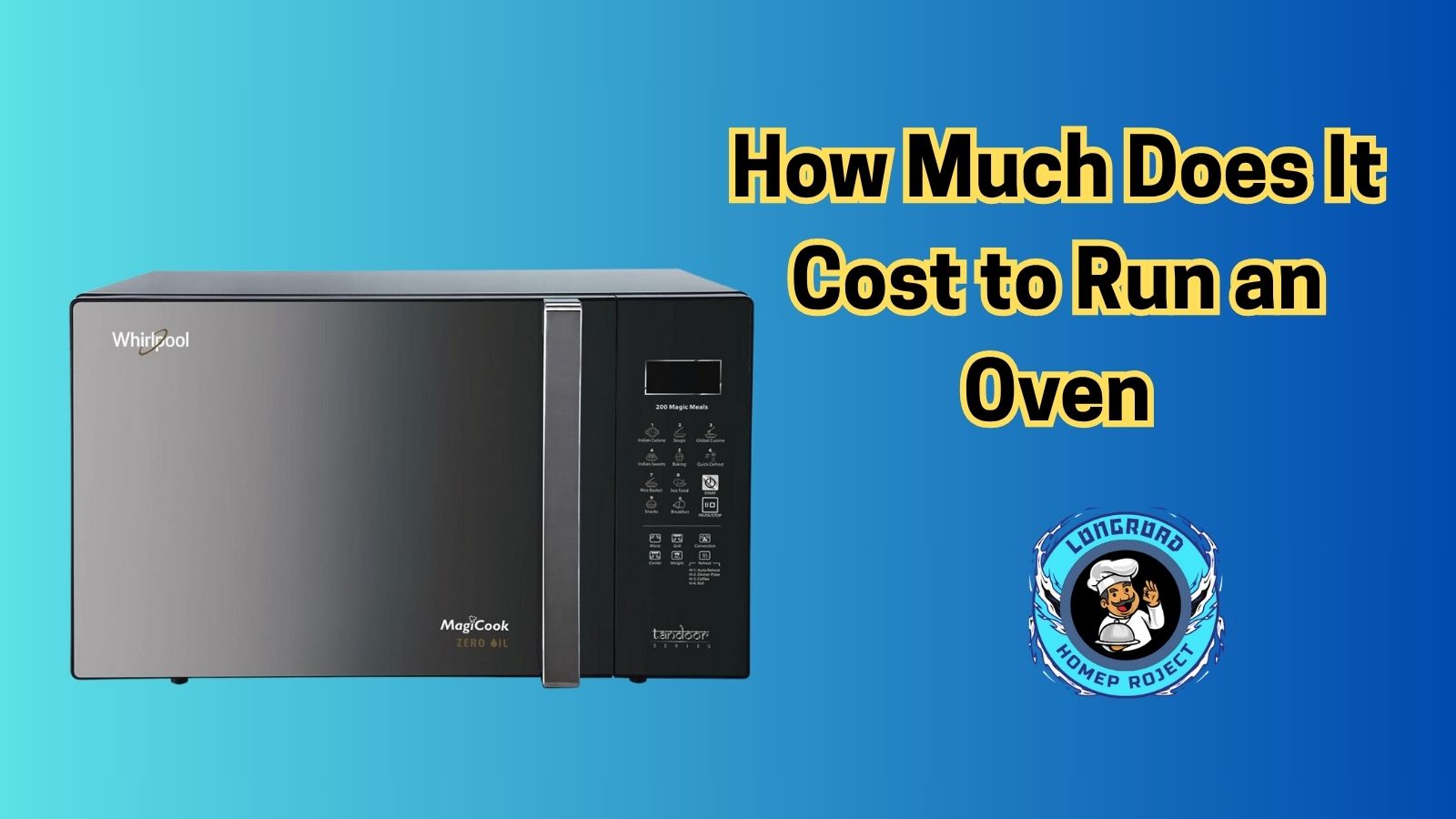As an Amazon Associate I earn from qualifying purchases.
After baking a roast for 3 hours one Sunday, I started wondering—was it burning my food or my budget?
The scent of rosemary and garlic filled the kitchen, the meat came out tender and juicy… but as I turned off the oven, a thought hit me: How much did that comfort meal cost me in electricity?
That single question led me down a rabbit hole of energy usage, power ratings, and utility costs. Turns out, how much it costs to run an oven isn’t a simple one-size-fits-all answer. It depends on whether you’re using gas or electric, your local energy rates, how long the oven runs, and even what temperature you set it to.
But don’t worry—I’ve done the research so you don’t have to. In this article, we’ll break down the cost of running an oven hour by hour, compare electric vs. gas, and even show you some tricks to save money while still cooking like a pro.
Whether you bake once a week or cook daily, knowing the real cost can help you make smarter kitchen choices—without sacrificing flavor.
Factors That Affect the Cost of Running an Oven
When asking how much does it cost to run an oven, the answer isn’t just a flat number. Several factors influence the final cost, from the type of oven you use to where you live. Let’s break down what actually impacts your oven’s energy usage and your utility bill.
Power Source: Electric vs. Gas
The most important factor is whether your oven runs on electricity or gas.
- Electric ovens typically consume around 2.3 kWh per hour. Multiply that by your local electricity rate (average U.S. rate: ~$0.16/kWh), and the cost quickly adds up.
- Gas ovens, on the other hand, use about 0.1 to 0.3 therms per hour. At an average gas rate of ~$1.10 per therm, they’re often cheaper per hour.
We’ll break down this comparison further in the next section.
Duration: 30 Minutes vs. 8 Hours
Naturally, the longer your oven stays on, the more it costs.
- A quick 30-minute bake may only use 1–1.5 kWh (electric) or 0.1 therm (gas).
- But if you’re slow-roasting for 8 hours, the numbers multiply fast.
This is especially important during the holidays when ovens are working overtime.
Temperature: Higher Heat, Higher Cost
Cooking at higher temperatures burns more energy.
An oven running at 400°F will use noticeably more power than one at 325°F—especially if preheating takes a long time.
Also, convection ovens that circulate air may use slightly more energy upfront but cook food faster, which can actually lower your cost overall.
Location: Electricity Prices Vary by State
Did you know electricity and gas rates vary widely depending on where you live?
- California: Average electricity is ~$0.27/kWh
- Texas: Closer to ~$0.14/kWh
- New York: ~$0.23/kWh
That means the same oven could cost nearly twice as much to run in one state compared to another.
Pro Tip: Check your most recent utility bill to see exactly what you’re paying per kWh or therm.
Oven Efficiency: New vs. Old Models
Just like cars, older ovens tend to be less efficient.
- They may take longer to preheat
- Struggle to maintain consistent temperatures
- Or leak heat, requiring more energy to compensate
Newer models, especially ENERGY STAR-certified ones, are designed with better insulation and smarter heating elements to save energy.
If your oven is over 10 years old, you could be paying more just because it’s outdated.
When you factor in all of these variables—power type, usage time, temp settings, location, and age of the unit—you begin to see why your oven’s operating cost isn’t so straightforward. But understanding these details helps you make informed, money-saving decisions in the kitchen.

Cost Breakdown by Time – From 30 Minutes to 8 Hours
If you’ve ever wondered how much does it cost to run an oven for a quick bake vs a holiday feast, here’s a clear, bullet-style breakdown to help you estimate—fast.
Estimated National Average Rates:
- Electricity: $0.15 per kWh
- Gas: $1.20 per therm
Electric Oven Cost Estimates (2.3 kWh/hour)
- 30 minutes = ~$0.17
- 1 hour = ~$0.34
- 2 hours = ~$0.68
- 8 hours = ~$2.72
Gas Oven Cost Estimates (0.3 therms/hour)
- 30 minutes = ~$0.18
- 1 hour = ~$0.36
- 2 hours = ~$0.72
- 8 hours = ~$2.88
Pro Tip: If your oven is ENERGY STAR certified, your real cost may be 15–30% lower than these estimates.
These numbers give you a ballpark idea—whether you’re baking cookies or slow-roasting a brisket. Just remember, real rates vary by region and oven model.
How Much Does It Cost to Run an Oven at 350°F or 400°F?
Oven temperature plays a major role in how much energy you use—and ultimately, how much you pay.
350°F is the sweet spot for most everyday baking. It’s considered the “baseline” temperature in energy calculations, and typical electric ovens use about 2.3–2.5 kWh per hour at this level, costing around $0.34/hour at national average electricity rates.
But crank it up to 400°F, and your oven works harder. Higher temps draw 20–25% more power, especially if your oven isn’t well-insulated or is older. That same hour of roasting could now cost closer to $0.40–$0.45/hour.
💬 “When I roasted veggies at 400°F for an hour, the cost jumped by 10–15 cents vs my usual casseroles at 350°F,” I noticed one month. It might not seem like much, but if you cook daily, it adds up fast.
If you’re running long cook times—say, roasting a turkey for 3 hours at 400°F—that difference becomes even more significant.
Key Tip: Use 350°F when you can, or explore convection mode (if available), which cooks food faster and more evenly at slightly lower temps—saving both time and energy.e cost at ~$0.49, versus my usual $0.34 for casseroles at 350°F. That extra heat added about 15 cents!”
Real-Life Example – My Oven, My Utility Bill
Curious how all this plays out in real life? I decided to monitor my own usage:
My setup:
- Electric oven, rated at 2.4 kWh/hour
- Local electric rate: $0.15 per kWh
- Actual cost: ~$0.36/hour
Over one month of daily oven use (average 1 hour/day), my bill increased by about $11 compared to the previous month when I rarely baked.
Tools I used:
- Sense Energy Monitor
- Google Nest Power Meter
These apps help you track in real time, so you can make smarter decisions—and avoid surprises on your bill.

Does the Oven Use a Lot of Electricity?
The answer really depends on what you’re comparing it to. On its own, a conventional oven doesn’t seem like a major energy hog—but when stacked against smaller, more efficient appliances, the story changes.
Compared to Bigger Appliances (AC or Dryer)?
Not at all.
Air conditioners and clothes dryers typically use 2–5 kWh per hour, which is significantly more than an electric oven’s ~2.3 kWh/hour. So in that context, ovens are relatively moderate in energy use.
Compared to Smaller Appliances (Air Fryer or Microwave)?
Yes, ovens use much more.
If you’re just cooking for one or two people, an oven might be overkill. Devices like air fryers, toaster ovens, or microwaves use far less electricity and heat up almost instantly.
Convection Ovens: A More Efficient Option
If you’re using a modern convection oven, you’re already saving energy. These ovens use fans to circulate heat, reducing both cook time and temperature requirements—sometimes cutting energy use by up to 20–30% compared to older models.
Appliance Energy Comparison Table (Estimated per Hour)
| Appliance | Avg. Energy Use | Approx. Cost (USD) | Best Use Case |
|---|---|---|---|
| Electric Oven | ~2.3 kWh | ~$0.34 | Roasting, baking large meals |
| Gas Oven | ~0.3 therms | ~$0.36 | Traditional baking/roasting |
| Convection Oven | ~1.7–2.0 kWh | ~$0.25–$0.30 | Faster, more even baking |
| Air Fryer | ~0.6–1.0 kWh | ~$0.09–$0.15 | Crisping small batches, fast |
| Microwave | ~0.6–1.2 kWh | ~$0.09–$0.18 | Reheating, simple cooking |
| Toaster Oven | ~1.2 kWh | ~$0.18 | Toasting or small meals |
Tip: If you’re reheating leftovers or making a quick lunch, consider the microwave or air fryer. You’ll save energy and time.
Smart Tips to Reduce Oven Energy Costs
If you want to trim down your energy bills without giving up your favorite oven-baked meals, smart cooking habits can make a big difference. Here are some simple, practical ways to reduce the cost of running your oven:
Use Convection Mode (If Available)
Convection ovens use a fan to circulate hot air, which means your food cooks faster and more evenly. That often lets you drop the temperature by 25°F and shave off 10–20% of cooking time—saving both time and electricity.
Don’t Preheat Longer Than Needed
Most recipes overestimate preheat times. Unless you’re baking something very precise (like bread or pastries), you don’t need to wait forever. Turn the oven on while prepping, and place your dish in once it’s close to the target temperature.
Cook Multiple Dishes at Once
Batch your cooking! If you’re making dinner and dessert, use the same heat window. Ovens consume the most power while heating up—so take advantage of the hot cycle by cooking more at once.
💡 Pro Tip: Bake casseroles and veggies together at 375°F as a happy middle ground.
Keep the Oven Door Closed
Every time you open the oven, heat escapes and the temperature can drop by 25°F or more. That forces the oven to kick back on, using extra energy to reheat. Use the oven light and window instead of opening the door to check on your food.
Use Smaller Appliances for Everyday Meals
For small portions or quick meals, switch to an air fryer, toaster oven, or microwave. They use 70–90% less energy than a full-size oven and cook faster, especially for reheating or roasting small batches.

FAQs – Voice Search & Snippet Optimized
How much does it cost to run an oven for 1 hour?
✅ Around $0.34 for electric ovens and $0.36 for gas, based on national energy rates.
Is it expensive to run an oven for 2 hours?
✅ Not really. It costs under $0.70 for most electric ovens at 350°F, which is typical for baking.
How much does it cost to run an oven for 8 hours?
✅ Roughly $2.72 for electric and $2.88 for gas ovens—think holiday meals or slow-roasting meats.
Does the oven use more electricity at 400 degrees?
✅ Yes. Baking at 400°F can use 20–25% more energy than at 350°F.
Is it cheaper to use a microwave or air fryer?
✅ Absolutely. Microwaves and air fryers are far more energy-efficient and better for small, quick meals.
Conclusion
Running your oven isn’t outrageously expensive—but those pennies can add up over time. Whether you’re roasting dinner every night or just baking a weekend casserole, how long and how hot you cook matters more than you might think.
A few mindful tweaks—like turning down the temperature slightly, batch-cooking meals, or switching to an air fryer for quick bites—can shave real dollars off your monthly utility bill.
Remember, energy efficiency isn’t about deprivation—it’s about being smart with your habits. And in today’s economy, every little bit helps.
👉CTA: Start tracking your cooking energy today—your wallet will thank you!
As an Amazon Associate I earn from qualifying purchases.
